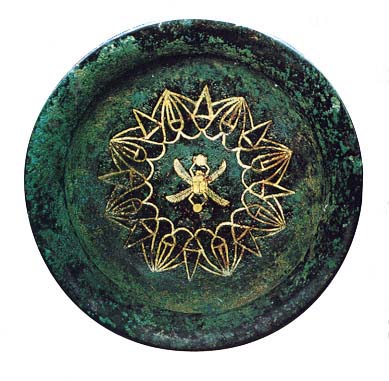Image Details

Shlomo Mousaieff Collection, London
The four-winged scarab on this bowl, owned by London-based antiquities collector Shlomo Moussaieff, identifies it as coming from Phoenicia, not Egypt, according to Frank Cross in an earlier BAR article. Phoenicia is the home of the four-winged beetle; almost no two-winged scarabs appear there. And of 61 storage jar handles found in Jerusalem in Hezekiah’s era stamped l’melekh, “belonging to the king,” only one shows a four-winged scarab. To Lubetski this suggests that Hezekiah was far more influenced by Egyptian culture than by Phoenician. Lubetski believes that Hezekiah used Egyptian imagery because he wished to align himself with Egypt in the face of the Assyrian threat from the north. Lubetski further suggests that Hezekiah was drawn to Egyptian imagery because of his political aspirations: Just as the Upper and Lower kingdoms of Egypt were united under one pharaoh, so Hezekiah hoped one day to reunite his southern kingdom of Judah with the northern kingdom of Israel, which had been conquered by Assyria in 721 B.C.E.
